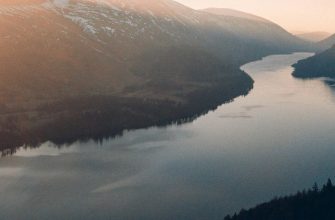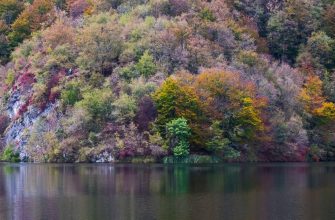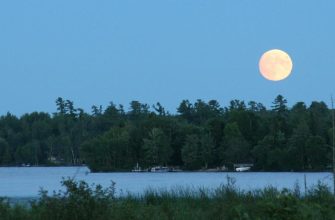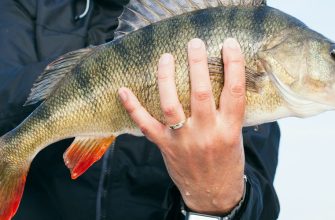- Understanding Lake Trout
- What Types Of Trout Live In Lakes
- Trout Characteristics
- Their preferred habitat, feeding patterns, and behavior
- Why lake trout are a popular target for anglers
- Essential Gear for Trout Fishing
- Fishing Rod and Reel
- Fishing Line
- Hooks and Baits
- Additional Accessories
- How to Fish for Trout in a Lake: Beginner Techniques
- How to Find Trout in Open Water
- Significance of Selecting the Right Lake for Trout Fishing
- How Certain Water Bodys Are Better Suited for Catching Trout
- Tips for Researching and Identifying Suitable Fishing Locations
- Bait and Lure Selection
- Various Bait and Lure Options
- Effectiveness of Different Bait and Lure Types
- Shoreline Bait Rigs
- Fishing Techniques
- Trolling Technique
- Casting Technique
- Jigging Technique
- Understanding Trout Behavior
- Behavior and Feeding Patterns of Trout
- How Understanding Trout Behavior Can Increase Fishing Success
- Tips on Observing Water Conditions and Identifying Potential Feeding Areas
- Best Seasons for Trout Fishing
- Summer Months: The Prime Time for Trout Fishing
- Early Summer: The Peak of Trout Activity
- Late Summer: Adapting to Changing Conditions
- Fall: The Transition Period
- Safety and Conservation Tips for Freshwater Fishing
- The Importance of Practicing Responsible Fishing
- Guidelines on Catch-and-Release Practices
- Local Regulations and Restrictions
- FAQs
- Q: What are some beginner techniques for fishing for trout in lakes?
- Q: When is the best time to fish for trout in lakes?
- Q: What kind of fishing gear do I need for fishing for trout in lakes?
- Q: What are some important fishing tactics to use for catching pond and lake trout?
- Q: How do lakes get stocked with trout for fishing?
- Q: What are the different types of trout that can be found in lakes?
- Q: What are some effective ways to fish for trout in rivers and streams?
- Q: What is the best technique for angling for trout in rivers and streams?
- Q: What are some tips for angling for trout in Oregon?
- Q: Where can I find related articles on fishing for trout in lakes?
Are you interested in learning how to fish for trout in lakes? Trout fishing can be an exciting and rewarding experience, especially for beginners. Whether you’re casting your line in a river or stream, or even venturing out into saltwater, lakes are stocked with different trout species, making them a great place to start your fishing journey.
When it comes to trout fishing, using spinners is one of the best ways to attract these elusive fish. Spinners are artificial lures that mimic the movement of small fish, enticing trout to strike. They are easy to use and can be effective in both still and moving water.

Trout fishing in lakes requires some understanding of the trout’s habitat and behavior. Trouts prefer cooler water, so during the summer months, they tend to be found in deeper parts of the water body where the area temperatures are lower. Look for ledges or areas with varying depths, as trout often seek shelter and food in these spots.
Now, let’s talk about bait. Instead of using traditional baits like worms or salmon eggs, consider using lures such as spoons or artificial flies. These lures can imitate the natural prey of trout, increasing your chances of a successful catch.
When fishing for trout, it’s important to have the right gear. A reliable rod and gear combo with a smooth pulling system is essential for reeling in these powerful fish. Make sure to adjust your drag properly to avoid losing your catch.
Remember, fishing for trout is not just about the catch; it’s about the whole experience. Take the time to appreciate the serene surroundings and the thrill of feeling a trout at the end of your line. Enjoy the process of learning how to fish and savor the moments spent in nature.
Understanding Lake Trout

What Types Of Trout Live In Lakes
In lakes across America, various types of trout can be found. These include rainbow trout, brown trout and brook trout. Each type has its own characteristics and preferences when it comes to habitat and feeding patterns.
Trout Characteristics
Lake trout, sometimes referred to as “mackinaw” or “gray trout,” are a popular fish species among anglers. They are known for their unique characteristics and can be found in cold-water lakes throughout the country.
Trout has a streamlined body with colors ranging from dark green to gray. They can grow to impressive sizes, with some individuals reaching over 40 pounds. One notable feature of trout is their deeply forked tail, which aids in their swimming and maneuverability.
Their preferred habitat, feeding patterns, and behavior
Trout prefer cold water environments, and trout are no exception. They are often found in deep, clear waters with temperatures ranging from 45 to 55 degrees Fahrenheit. These fish feed on a variety of prey, including smaller fish, insects, and crustaceans. Trout are known to be opportunistic feeders, striking their prey with lightning-fast speed.
Trout are most active during the spring and fall months when the area temperatures are cooler. During these times, anglers have a higher chance of catching trout.
Read more: Lake Havasu Fishing Guide: Tip to Catching Bass and More in Arizona
Why lake trout are a popular target for anglers
This trout offers a thrilling challenge for anglers due to their powerful fights and elusive nature. Their size and strength make them a sought-after catch. Additionally, the meat of trout is highly regarded for its delicate flavor and firm texture, making it a favorite among seafood enthusiasts.
Essential Gear for Trout Fishing
When it comes to trout fishing, having the right gear is essential. Here is a comprehensive list of equipment needed for a successful fishing trip:
Fishing Rod and Reel
Choose a fishing rod and gear combination that is suitable for lake fishing. Opt for a medium to heavy-action rod that can handle the weight and fight of trout.
Fishing Line
Use a monofilament or fluorocarbon fishing line with a test strength between 8 and 12 pounds. This will provide the necessary strength to handle larger trout.
Hooks and Baits
Select a variety of hooks in different sizes, such as treble hooks or single hooks. Popular baits include live bait such as minnows or nightcrawlers, as well as artificial lures like spoons or spinners.
Additional Accessories
Don’t forget to pack a tackle box with essentials like sinkers, swivels, and bobbers. It’s also a good idea to have a landing net, pliers, and a fillet knife for handling and cleaning your catch.
How to Fish for Trout in a Lake: Beginner Techniques

How to Find Trout in Open Water
Significance of Selecting the Right Lake for Trout Fishing
When it comes to trout fishing, selecting the right water body is of utmost importance. Different lakes offer different conditions and characteristics that can greatly impact your fishing success. When targeting lake trout specifically, it’s crucial to choose a water body that is known for harboring these prized fish.
Lake trout are native to North America and can be found in various water bodies across the continent. However, not all water bodies are equally suited for catching trout. Some water bodies have the ideal conditions and habitat that trout prefer, making them more likely to be successful fishing grounds.
How Certain Water Bodys Are Better Suited for Catching Trout
Certain lakes are known for their excellent trout populations and offer prime fishing opportunities. These water bodies typically have specific characteristics that attract and support trout. Here are some key factors to consider when looking for water bodies that are better suited for catching trout:
- Water Temperatures: Trout thrive in cooler waters, so look for water bodies with colder temperatures throughout the year. Deep, clear water bodies that have a thermocline – a distinct layer of water where temperature and oxygen levels change rapidly – are often preferred by trout.
- Abundance of Prey: Trout feed on a variety of prey, including minnows, insects, and other small fish. Water bodies with a healthy population of these prey species are more likely to attract trout. Look for water bodies with abundant baitfish populations and diverse insect life.
- Structural Features: Trout are known to inhabit deeper water, especially during the warm summer months. Look for water bodies with deep basins, underwater drop-offs, submerged rock formations, or underwater structures where trout can seek refuge and ambush their prey.
Tips for Researching and Identifying Suitable Fishing Locations
Researching and identifying suitable fishing locations within a water body can greatly enhance your chances of catching trout. Here are some tips to help you find the best spots:
- Understand Lake Topography: Study maps and charts of the water body to identify potential hotspots. Look for underwater structures, points, shoals, or areas where the water body transitions from shallow to deep water. These areas are often frequented by trout.
- Observe the Water: Spend some time observing the water body before you start fishing. Look for signs of fish activity such as jumping fish, diving birds, or baitfish schools. Pay attention to areas with moving water, as trout are often found near inflows, outflows, or areas with currents.
- Experiment with Depths: Trout can be found at varying depths depending on the time of year and water conditions. Start by fishing at various depths, ranging from near the surface to deeper water, to determine where the trout are actively feeding.
Bait and Lure Selection
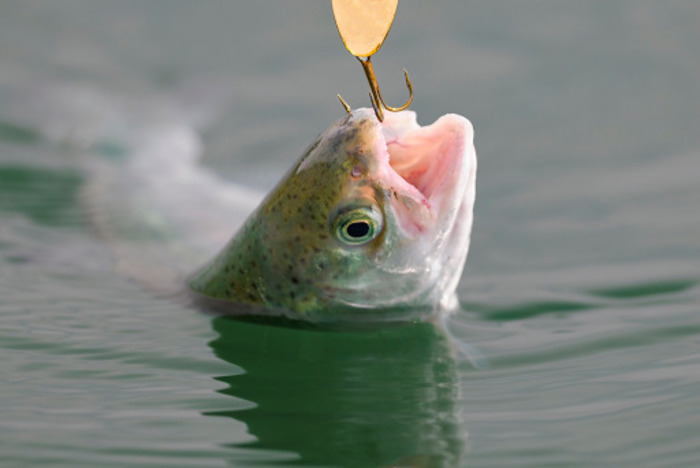
When it comes to enticing trout, having the right bait and lure can make all the difference. In this article, we’ll explore various options for bait and lures that are effective in catching trout. Whether you prefer natural baits or artificial lures, we’ve got you covered. Read on to discover the best strategies for a successful trout fishing experience.
Various Bait and Lure Options
There are numerous bait and lure options available to target trout. Let’s take a closer look at some of the most popular choices:
- Live Bait: Using live bait, such as worms or minnows, can be highly effective in attracting trout. The natural movement and scent of live bait make it irresistible to these fish.
- Artificial Lures: Artificial lures come in a wide range of shapes, sizes, and colors, designed to mimic the appearance of trout’s native prey. Spinners and spoons are particularly effective, as they create enticing flashes and vibrations in the water.
Effectiveness of Different Bait and Lure Types
The effectiveness of different bait and lure types can vary depending on the specific conditions you’re fishing in. Factors such as area temperatures, weather conditions, and the time of year can all influence the success of your bait and lure selection.
In colder water, trout tend to be less active, so using slower-moving bait like worms or powerbait can be effective. As the area temperatures warm up, trout become more active, and faster-retrieved lures like spinners and spoons can trigger their predatory instincts.
Shoreline Bait Rigs
When fishing for trout from the shoreline, using bait rigs can be a productive approach. One popular technique is to use a sliding sinker rig with a worm or powerbait. This rig allows the bait to float just above the water body bottom, where trout often feed.
By experimenting with different bait rigs and adjusting your fishing technique based on the conditions, you can increase your chances of landing a trophy fish.
Fishing Techniques
Trolling Technique
To catch trout using the trolling technique, you’ll need a boat, rods and gear, and some spinner lures. Trolling is an effective method for covering a large area of the water body and locating active fish.
- Begin by attaching a spinner lure to your fishing line. Spinners are known to attract trout due to their flashy appearance and vibration in the water.
- Launch your boat into the water body and start moving at a slow to moderate speed. The boat’s movement will cause the spinner to spin and create a lifelike action in the water, enticing the trout to strike.
- Cast your bait behind the boat and let it trail at different depths. Trout can be found at various depths depending on factors such as area temperatures and food availability. Experiment with varying depths to increase your chances of success.
- Keep an eye on your rod tip for any signs of a strike. When a trout bites, you will feel a tug or see the rod tip bending. Once this happens, quickly reel in the line and set the hook by giving a firm upward jerk.
Casting Technique
Casting is another popular technique for targeting trout from the shore. This method allows you to precisely place your bait in specific areas where trout are likely to be hiding.
- Choose a suitable fishing spot along the shore, preferably near structures such as rocks, fallen trees, or underwater ledges. These areas provide cover for the trout and increase your chances of a successful catch.
- Use a spinning rod and reel setup for casting. It provides the necessary flexibility and control required for accurate bait placement.
- Select a lure or bait that trout find enticing, such as spoons or soft plastic swimbaits. These lures mimic the movement of small fish, which trout find irresistible.
- Cast your bait into the water, aiming for areas close to structures or drop-offs. Allow the bait to sink to the desired depth and retrieve it with a slow and steady retrieve motion. This imitates the movement of injured prey and can trigger a strike from a hungry trout.
Jigging Technique
It is a versatile technique that can be used both from a boat and off the shore. It involves using a weighted lure or jigger that is jerked up and down to mimic the movement of prey.
- Equip yourself with a fishing rod specifically designed for jigging. These rods are shorter and stiffer, allowing for precise control and quick hooksets.
- Choose a jigger that matches the size of the prey trout typically feed on. Jiggers come in various sizes and colors, so it’s essential to select the right one for the fishing conditions.
- Position yourself near a structure or known fishing spot. Drop your jig into the water and let it sink to the desired depth.
- Start jerking the rod tip upwards in a rhythmic motion, creating an upward and downward movement of the jig. This action imitates the movement of injured baitfish and can trigger a reaction from trout.
- Pay close attention to your line for any signs of a strike. Trout often hit the jigger on the descent or during the pause between jerks. When you feel a bite, set the hook quickly and reel in your catch.
Understanding Trout Behavior

Behavior and Feeding Patterns of Trout
Lake trout, also known as Salvelinus namaycush, are known for their unique behavior and feeding patterns. These fish are commonly found in lakes, ponds and reservoirs across North America. Water bodies that are stocked with trout offer exciting opportunities for anglers looking to catch these prized fish.
Trout are known for their preference for cooler area temperatures. They tend to stay in the deeper parts of the water body, especially during the warmer months when the surface area temperatures rise. These fish are often found near underwater structures such as ledges and drop-offs, where they can find shelter and access their preferred food sources.
When it comes to feeding, trout are opportunistic predators. They have a diverse diet that includes smaller fish, insects, crustaceans, and in some cases, even small mammals. Understanding their feeding patterns is crucial to increasing fishing success.
How Understanding Trout Behavior Can Increase Fishing Success
By understanding trout behavior, anglers can increase their chances of a successful fishing trip. One key aspect to consider is the time of day. Trout are most active during the early morning and late evening hours. During these times, they are more likely to be actively searching for food, making it an ideal time to target them.
Observing water conditions is also important when fishing for trout. Pay attention to factors such as water clarity, temperature, and current. Trout are more likely to be found in areas with clear water and moderate currents, as these conditions provide better visibility for them to hunt their prey.
Identifying potential feeding areas is another essential strategy. Look for areas where there is a good supply of food sources, such as schools of baitfish or insect hatches. These areas can include drop-offs, submerged structures, and areas with underwater vegetation.
Tips on Observing Water Conditions and Identifying Potential Feeding Areas
- Water Clarity: Look for areas with clear water, as this indicates better visibility for trout and increases the chances of a successful catch.
- Water Temperature: Pay attention to area temperatures, as trout prefer cooler water. They are more likely to be found in areas where the area temperatures are lower.
- Current: Moderate currents can attract trout, as they provide oxygen-rich water and bring in a steady supply of food sources.
- Underwater Structures: Focus on areas with underwater structures such as ledges, drop-offs, and submerged rocks. These structures provide shelter for trout and serve as ambush points for them to prey on smaller fish.
Best Seasons for Trout Fishing
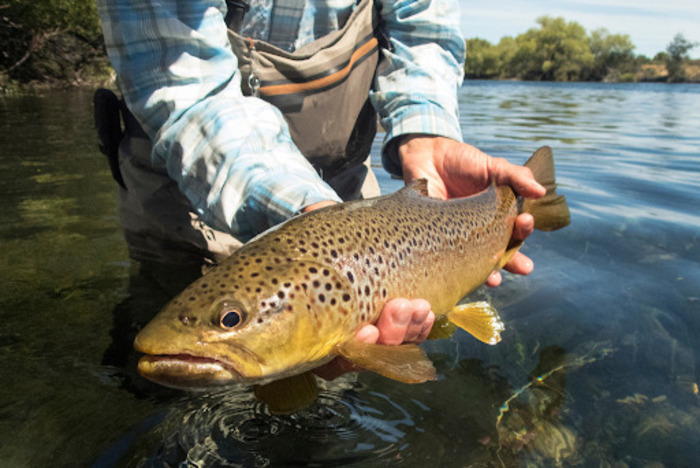
Understanding the best seasons for lake trout fishing is key to a successful fishing trip.
Summer Months: The Prime Time for Trout Fishing
If you’re looking to reel in some trophy-sized trout, the summer months are your best bet. During this time, trout are more active and can be found in shallower waters. The warmer temperatures cause these fish to venture closer to the surface in search of food, making them more accessible to anglers.
Early Summer: The Peak of Trout Activity
The early summer months, particularly June and July, mark the peak of trout activity. As the area temperatures rise, these fish become more energetic and aggressive in their feeding patterns. This is the perfect opportunity to target them using a variety of fishing techniques.
Late Summer: Adapting to Changing Conditions
As the summer progresses, trout behavior starts to change. They become more sensitive to changes in area temperatures and may retreat to deeper parts of the water body to find cooler waters. During this time, it’s crucial to adjust your fishing strategies accordingly. Exploring varying depths and using techniques such as trolling or vertical jigging can help you locate these elusive fish.
Fall: The Transition Period
As the air starts to cool and the leaves change colors, trout begin their transition into fall patterns. While they may still be found in deeper waters, they start moving closer to the shallows in preparation for the spawning season. This period offers a unique opportunity to catch trout before they enter their spawning grounds.
Safety and Conservation Tips for Freshwater Fishing

The Importance of Practicing Responsible Fishing
When it comes to trout fishing, practicing responsible fishing techniques is of utmost importance. By following these guidelines, you can help preserve the population of trout and ensure the sustainability of this beloved sport.
You’ll likely encounter various regulations and restrictions specific to trout fishing in different regions. It’s crucial to familiarize yourself with the local guidelines before heading out on your fishing adventure. This will help protect the fish population and maintain the ecological balance of the water body.
Read more: Clear Lake Fishing in Oregon: Tips for Catching Crappie in California
Guidelines on Catch-and-Release Practices
Patience is key when it comes to catch-and-release practices. By following these guidelines, you can increase the chances of a successful release and minimize harm to the fish:
- Handle the fish with care: When you catch a trout, avoid excessive handling and use wet hands or a rubberized landing net to minimize damage to their delicate slime coat.
- Minimize air exposure: Keep the fish in the water as much as possible, removing the hook quickly and gently. This will help reduce stress and increase their chances of survival after release.
- Use barbless hooks: Barbless hooks make it easier to release the fish without causing excessive injury. Consider replacing your treble hooks with single, barbless hooks for a safer and more conservation-oriented approach.
- Revive the fish properly: If the trout shows signs of exhaustion after a fight, hold it gently in the water, facing the current. This will allow oxygen to flow over their gills, helping them recover before swimming away.
Remember, practicing catch-and-release contributes to the preservation of trout populations and ensures the sustainability of this fantastic sport for future generations.
Local Regulations and Restrictions
When fishing for trout, it’s essential to familiarize yourself with the local regulations and restrictions specific to the body of water you’re fishing in. This includes understanding the permitted fishing season, size limits, bag limits, and any specific gear or bait restrictions.
By adhering to these regulations, you not only demonstrate your commitment to responsible fishing but also contribute to the conservation efforts aimed at maintaining healthy lake trout populations.
In conclusion, safety and conservation are paramount when engaging in trout fishing. By following the guidelines on responsible fishing practices, practicing catch-and-release methods, and adhering to local regulations, you can enjoy this thrilling sport while preserving the natural balance of our lakes and ensuring the longevity of trout populations.
Remember, being a responsible angler is not only fulfilling but also vital for the sustainability of our precious water resources.
FAQs
Q: What are some beginner techniques for fishing for trout in lakes?
A: Some beginner techniques for fishing for trout include using bait such as salmon eggs or using lures such as spinners. Additionally, using tailored tackle and learning how to suspend a bait with a bobber can also be effective techniques for beginners.
Q: When is the best time to fish for trout in lakes?
A: The best time to angl for trout is during the early morning or late afternoon when the temperature is cooler. Trout are more active during these times, making it easier to catch them.
Q: What kind of fishing gear do I need for fishing for trout in lakes?
A: For angling for trout, you will need a fishing rod, reel, and line suitable for trout fishing, as well as various lures and baits, including salmon eggs and spinners. Additionally, having split shots to help suspend bait and a good drag system on your reel is important.
Q: What are some important fishing tactics to use for catching pond and lake trout?
A: Some important fishing tactics for catching pond and lake trout include covering a lot of water by moving around the water body, targeting areas near inlets or areas with cover, and adjusting bait depth to find where the trout are suspending. Using a pulling system to tire out the trout and being patient with the fight is also crucial.
Q: How do lakes get stocked with trout for fishing?
A: Lakes are typically stocked with trout by fish and wildlife agencies, who release fish ranging in size from fingerlings to adult trout. This stocking usually occurs during specific months to ensure a thriving trout population for fishing.
Q: What are the different types of trout that can be found in lakes?
A: Lakes can be home to various types of trout, including rainbow, brown, and cutthroat trout. Each type of trout may have specific habitat preferences and behaviors that anglers should consider when fishing for them.
Q: What are some effective ways to fish for trout in rivers and streams?
A: Some effective ways to angl for trout in rivers and streams include using different types of bait such as salmon eggs or using lures like spinners. Anglers can also try fishing near cover or in areas where rivers and streams meet, as these can be good spots for trout.
Q: What is the best technique for angling for trout in rivers and streams?
A: The best technique for angling for trout in rivers and streams can involve using a combination of drifting bait or lures through the current, adjusting bait depth for where the trout are holding, and using a pulling system to control the fight once a trout is hooked.
Q: What are some tips for angling for trout in Oregon?
A: When angling for trout in Oregon, anglers can target lakes, rivers and streams that are known for trout populations. Using appropriate fishing gear, being aware of specific regulations, and targeting the months when trout are most active can all improve anglers’ success in Oregon.
Q: Where can I find related articles on fishing for trout in lakes?
A: You can find related articles on fishing for trout in lakes by exploring fishing websites, outdoor magazines, and online forums dedicated to fishing. These resources often provide valuable tips, techniques, and insights from experienced anglers.

